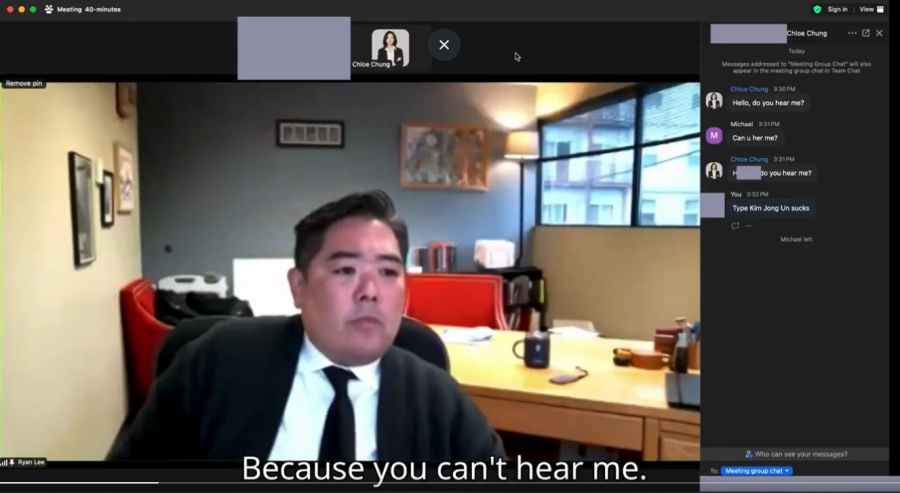Hackers Are Hijacking Zoom Calls—Don’t Click That Link!

Author: Adam Collins
Imagine this: You’re on a Zoom call with potential investors. Big names. People who could take your startup to the next level. But something’s wrong—the audio isn’t working. A few of the VCs type in the chat: “Hey, we can’t hear you.” Another chimes in, “Try joining this backup link.”
What do you do?
Most people wouldn’t think twice. You’re in a high-stakes meeting, eager to impress, and you certainly don’t want tech issues to make you look unprofessional. So, you click the new link.
And just like that, you’re hacked.
The Zoom Scam in Action
Here’s how it works: The scammers set up a fake Zoom video call with actors posing as investors. When you join, they claim they can’t hear you and direct you to a new link—one that looks legit but is actually a trap. Once there, you’re told to install a small “patch” to fix the audio.

Source: Twitter
The moment you install it, the hackers gain access to your system. Your files, passwords, even your crypto wallets—gone. And these aren’t amateurs. This particular scam has been linked to North Korean hackers who have already stolen tens of millions of dollars using this tactic.
How They Trick You
These scams work because they exploit urgency and authority. If you think you’re talking to powerful investors, you’re less likely to question their requests. You just want to get the call working and make your pitch.
And let’s be honest—who hasn’t had tech issues on Zoom before? It’s the perfect cover. But in this case, the issue isn’t your audio. It’s a full-scale cyber attack.
How to Protect Yourself
Now that you know, you won’t fall for it. Here’s how to stay safe:
- Never click on unexpected links. If someone tells you to switch rooms, don’t follow their link.
- Create your own secure meeting. If there’s an issue, suggest moving to a Google Meet or another Zoom link that you create.
- Never install unexpected software. Zoom doesn’t require extra patches mid-meeting. If someone asks you to install a fix, it’s a scam.
- Verify identities. If you’re unsure, reach out to the supposed VC through another channel—like their official email or LinkedIn.
Bottom Line: Stay Sharp, Stay Secure
Hackers are getting smarter, but so are you. The next time someone sends you a mysterious Zoom link, pause. Think. And take control of your security.
Because the only thing worse than a bad VC pitch is losing everything before you even get to make it.
Image Source: Unsplash.com
Report a Scam!

Have you fallen for a hoax, bought a fake product? Report the site and warn others!
Scam Categories
Help & Info
Popular Stories
As the influence of the internet rises, so does the prevalence of online scams. There are fraudsters making all kinds of claims to trap victims online - from fake investment opportunities to online stores - and the internet allows them to operate from any part of the world with anonymity. The ability to spot online scams is an important skill to have as the virtual world is increasingly becoming a part of every facet of our lives. The below tips will help you identify the signs which can indicate that a website could be a scam. Common Sense: Too Good To Be True When looking for goods online, a great deal can be very enticing. A Gucci bag or a new iPhone for half the price? Who wouldn’t want to grab such a deal? Scammers know this too and try to take advantage of the fact. If an online deal looks too good to be true, think twice and double-check things. The easiest way to do this is to simply check out the same product at competing websites (that you trust). If the difference in prices is huge, it might be better to double-check the rest of the website. Check Out the Social Media Links Social media is a core part of ecommerce businesses these days and consumers often expect online shops to have a social media presence. Scammers know this and often insert logos of social media sites on their websites. Scratching beneath the surface often reveals this fu
So the worst has come to pass - you realise you parted with your money too fast, and the site you used was a scam - what now? Well first of all, don’t despair!! If you think you have been scammed, the first port of call when having an issue is to simply ask for a refund. This is the first and easiest step to determine whether you are dealing with a genuine company or scammers. Sadly, getting your money back from a scammer is not as simple as just asking. If you are indeed dealing with scammers, the procedure (and chance) of getting your money back varies depending on the payment method you used. PayPal Debit card/Credit card Bank transfer Wire transfer Google Pay Bitcoin PayPal If you used PayPal, you have a strong chance of getting your money back if you were scammed. On their website, you can file a dispute within 180 calendar days of your purchase. Conditions to file a dispute: The simplest situation is that you ordered from an online store and it has not arrived. In this case this is what PayPal states: "If your order never shows up and the seller can't provide proof of shipment or delivery, you'll get a full refund. It's that simple." The scammer has sent you a completely different item. For example, you ordered a PlayStation 4, but instead received only a Playstation controller. The condition of the item was misrepresented on the product page. This could be the
